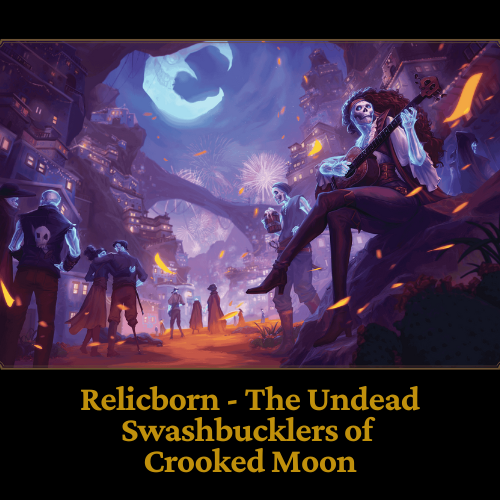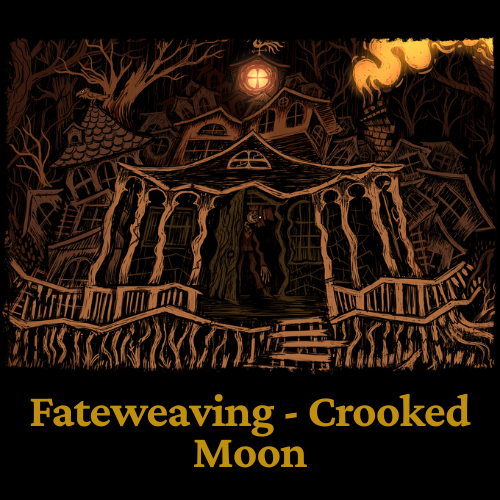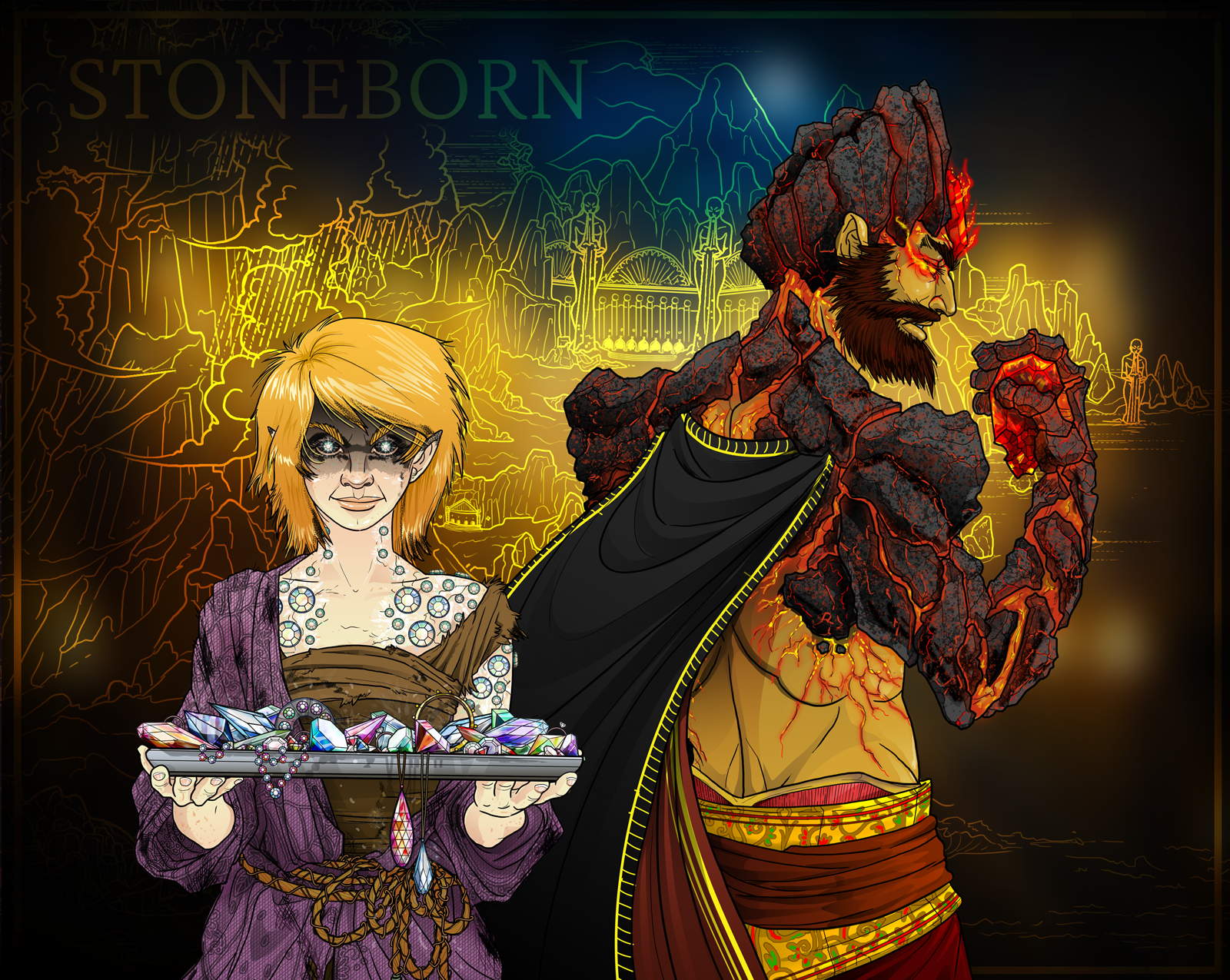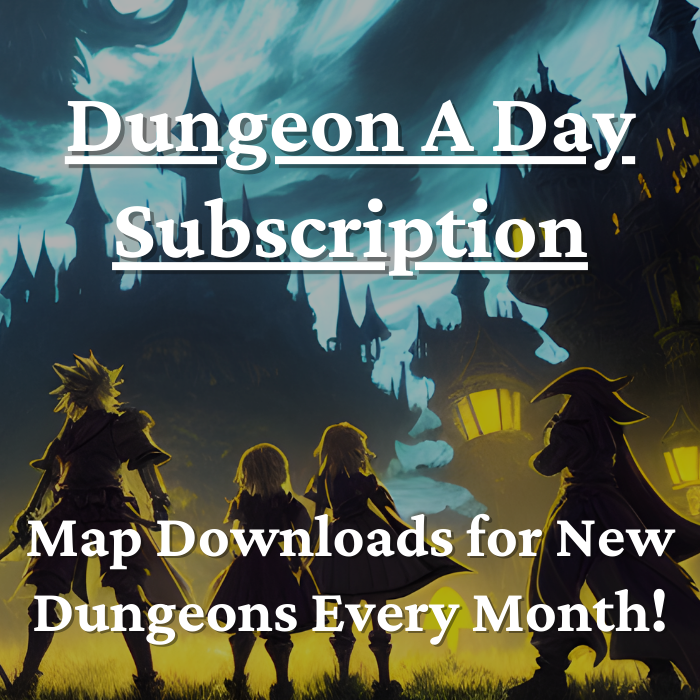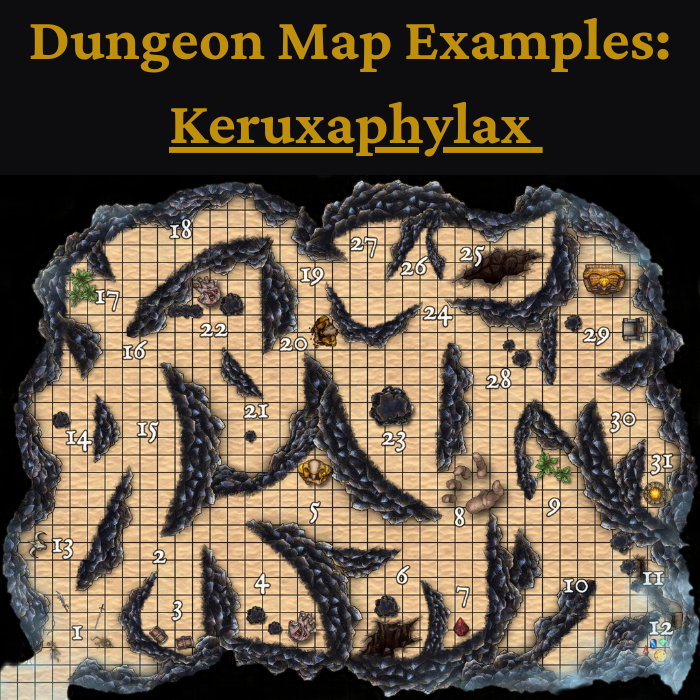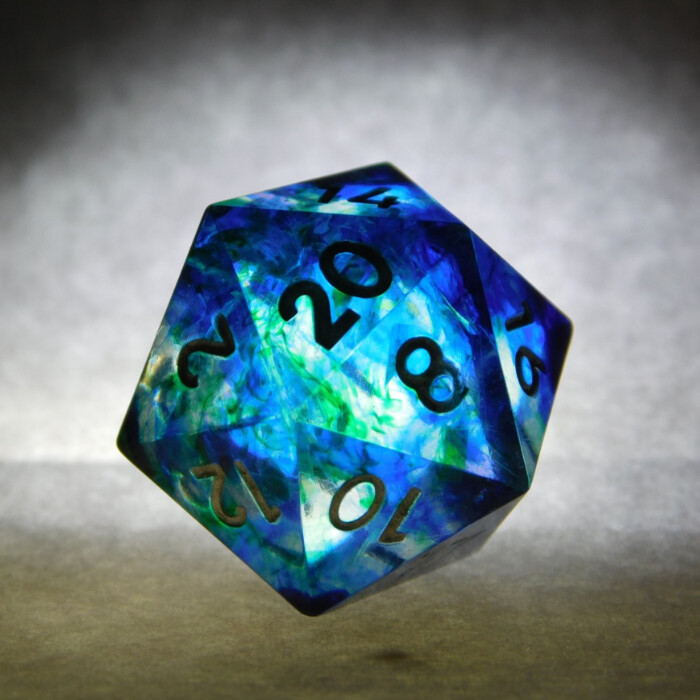Banishment 5e - D&D 5th Edition Spell Book
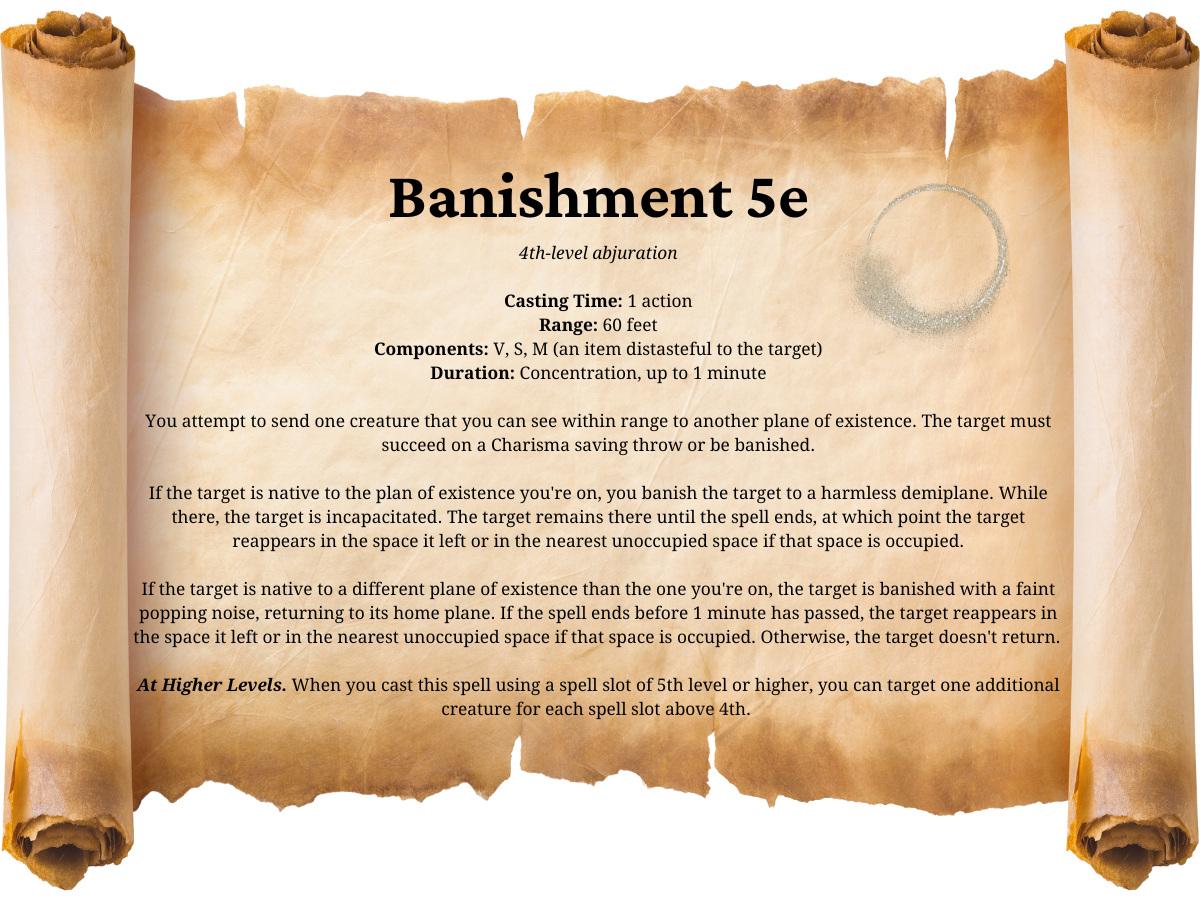
Banishment 5e Spell Effects
4th-level abjuration
Casting Time: 1 action
Range: 60 feet
Components: V, S, M (an item distasteful to the target)
Duration: Concentration, up to 1 minute
You attempt to send one creature that you can see within range to another plane of existence. The target must succeed on a Charisma saving throw or be banished.
If the target is native to the plan of existence you're on, you banish the target to a harmless demiplane. While there, the target is incapacitated. The target remains there until the spell ends, at which point the target reappears in the space it left or in the nearest unoccupied space if that space is occupied.
If the target is native to a different plane of existence than the one you're on, the target is banished with a faint popping noise, returning to its home plane. If the spell ends before 1 minute has passed, the target reappears in the space it left or in the nearest unoccupied space if that space is occupied. Otherwise, the target doesn't return.
At Higher Levels. When you cast this spell using a spell slot of 5th level or higher, you can target one additional creature for each spell slot above 4th.
All information on Banishment 5e comes from the D&D 5th edition Player's Handbook.
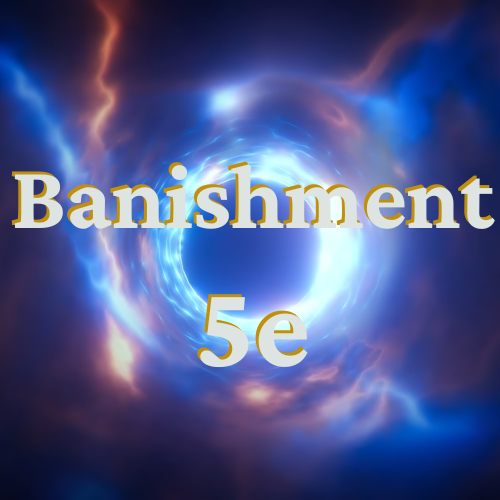
Classes That Can Cast Banishment 5e
The following classes may cast Banishment 5e as part of their normal class spell availability:
- Cleric
- Paladin
- Sorcerer
- Warlock
- Wizard
Based on the effects and general flavor for Banishment 5e, it isn't a surprise that so many classes gain access to casting the spell.
Banishment 5e Spell Effectiveness
Banishment 5e is kind of a weird spell. If you cast it upon another target native to the plane you're both on, then Banishment really only functions as a way to temporarily incapacitate the target. Don't get me wrong - completely removing an enemy from battle for a full 1-minute, or until concentration ends is a pretty decent effect.
However, during that time, the incapacitated target is on a different plane, so it's not like you're just completely stunning them for the full 1-minute while you beat them to death. Once they come back, you still have to deal with them, basically. Hopefully, just by that time, they won't have any friends around who are left alive.
The real value of Banishment 5e comes when you cast the spell on a target who is not from the plane of existence where you're both currently located. In this case, the target creature is actually banished - for good - so long as the spell effect does not end for the full 1-minute maximum duration. If concentration is interrupted, etc. then they reappear. So, it's important to make sure that the spell is not interrupted.
Banishment 5e comes in handy when you're battling demons from Avernus or storm giants from an elemental wind plane, for example. If the enemy has somehow found their way to the mortal realm (or wherever you're currently located), you can send them away, for good - that is, at least, until they find their way back again. But in the case of true banishment like these cases, once the battle's over, you don't have to then deal with the banished foe. Instead, they're just gone.
Banishment Usefulness
As mentioned above, Banishment 5e certainly has its points of extreme utility. Try to cast banishment in the following sorts of circumstances to increase its overall value for you.
- This is obvious, but since Banishment has 60 feet range, make sure to cast the spell from as far away from enemies as possible. That way, you run less risk of being attacked, and losing concentration.
- Try to cast Banishment on enemies who are from different planes of existence. Doing so promotes the value of Banishment 5e from a mid-tier spell to a nearly top-tier spell, as the effect of banishment may more or less become permanent.
- If you absolutely must cast Banishment 5e on enemies who are native to the plane you're currently on, try to use it on your most difficult foes, when they're surrounded by their underlings. If you can incapacitate a dangerous enemy while dealing with their minions, then the ultimate fight against the more dangerous enemy, once they reappear, becomes much more manageable.
Visit the Eternity TTRPG Store!
Combine Banishment 5e with the Following Spells
Since Banishment 5e is a 4th-level spell, when you do cast it, you really want to make sure that the spell succeeds. It can really be a terrible feeling when you unleash a powerful spell, only to have your target resist it's effects. So, combine Banishment with the following spells to try and get the most out of your attack.
- Bane 5e: before unleashing Banishment 5e, try to lower your target's saving throws by 1d4, using Bane. Anything you can do to increase your hit chance with Banishment is a win. Though you won't be able to continue concentrating on Bane, once Banishment is cast, you can (most likely) convince your dungeon master that its effects should stay in place until Banishment takes effect.
- Bless 5e: similarly, have an ally cast Bless on you - even while you're concentrating on Bane (or vice versa) - so that your saving throws gain +1d4. Since concentration can be broken when you take damage, having some spell effect resistance is a major plus.
- Mage Armor 5e: as with Bless, you can decrease your chances of taking physical damage by increasing your AC, with mage armor. Less damage taken means less chances to lose concentration with Banishment 5e.
Banishment 5e Counters
Silence 5e is always a spell to watch out for whenever you're playing any spell-casting character. Otherwise, the real key to Banishment 5e is simply to make sure that you don't take damage once the spell has succeeded.
Since the real value of Banishment comes from keeping your target imprisoned on a different plane, or even from banishing them from your plane altogether, the easiest way to get countered is simply to get hit a lot while you're concentrating on the spell. Make sure that doesn't happen, and you should just about be golden.
Banishment-Type Spells in Eternity TTRPG
In the Eternity TTRPG Game System, there aren't any directly comparable spells to Banishment 5e. Though Eternity is a TTRPG that was inspired by games like DnD, it doesn't copy D&D by any means, and there are many differences.
Whereas in D&D 5e, Banishment is really something like a combat-encounter spell combined with roleplay elements, spells in Eternity TTRPG have one definite use for battle, but allow for a bit more creativity when it comes to roleplaying, than D&D does.
Dice, Dungeons, Games & More - Eternity TTRPG
Share This Article

Author - Jacob Tegtman
Dear reader, I hope you enjoyed this article. Tabletop gaming has been a passion of mine since I was 6 years old. I've played just about every game from Dungeons and Dragons to video games like Final Fantasy. These games have inspired me, made me laugh, made me cry, and brought me endless hours of enjoyment.
I started Eternity TTRPG - and the indie tabletop game that goes along with it (Eternity Shop) - to share my love of gaming with others. I believe that in our technology-driven age, tabletop games help bring a sense of magic and community back into our world.
If you love the site, please share it with others! I have lots of gaming-related material for you to peruse and use in your own gaming sessions. If you have any questions about the site or want to contribute, just send me a message using the "Contact" page, which you can find in the site's footer.

